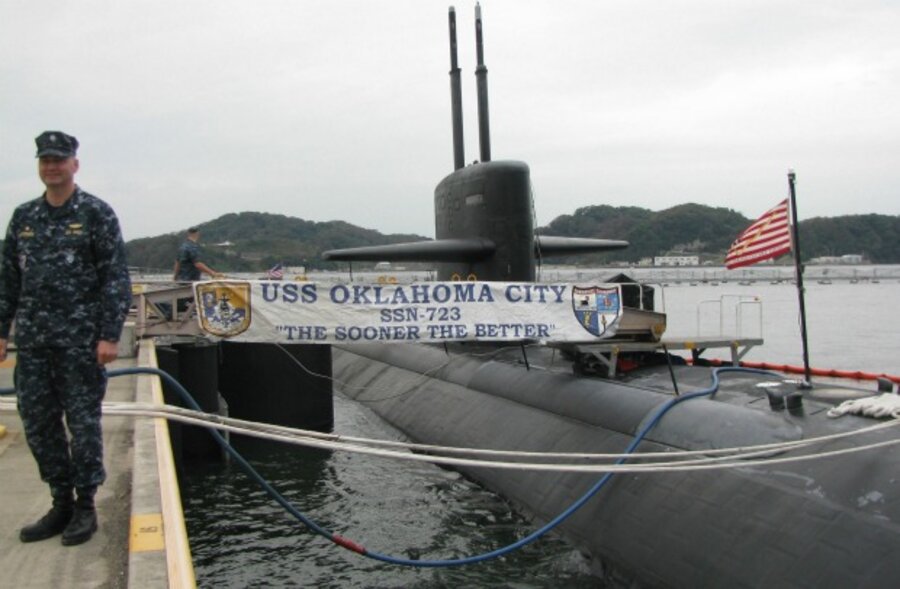How Obama can slash defense budget: Cut unnecessary nuclear weapons programs
Loading...
| Washington
Earlier this month, President Obama and Defense Secretary Leon Panetta outlined a more streamlined and affordable defense strategy that envisions a more limited role and smaller budget for US nuclear weapons.
While they were short on specifics, it is clear that in order to reach the administration’s goal of at least $480 billion in Pentagon savings over the next decade, previous schemes for a new generation of strategic nuclear weapons delivery systems must be scaled back.
The Navy has been seeking 12 new nuclear-armed ballistic missile submarines to carry more than 1,000 nuclear warheads into the 2070s, at a total cost of almost $350 billion. The Air Force has sought a new, nuclear-armed strategic bomber that would cost at least $68 billion, as well as a new fleet of land-based ballistic missiles.
In July, then-Vice Chairman of the Joint Chiefs of Staff Gen. James Cartwright explained that “… we have to recapitalize all three legs [of the nuclear triad], and we don’t have the money to do it.”
But as the new defense strategy correctly asserts, “It is possible that our deterrence goals can be achieved with a smaller nuclear force...”
Such adjustments are long overdue. Today, more than 20 years after the end of the Cold War, US and Russian nuclear arsenals still exceed what is reasonably necessary to deter nuclear attack. The United States deploys 1,790 strategic warheads, while Russia deploys 1,560 strategic warheads. Each side possesses thousands more warheads in storage.
No other nuclear-armed country deploys more than 300 strategic warheads; China has no more than 40 to 50 warheads on intercontinental-range missiles. Just one US nuclear-armed submarine could devastate an entire nation and kill millions.
Rather than maintaining obsolete arsenals that they neither need nor can afford, leaders in Washington and Moscow could pursue further, reciprocal reductions in their overall strategic nuclear forces – to 1,000 warheads or fewer each – and still retain more than enough megatonnage to deter nuclear attack by any current or future adversary.
There are three key ways in which the president and the Congress can trim at least $45 billion from strategic nuclear force modernization programs over the next 10 years.
The first step is to downsize the nuclear-armed submarine force. By reducing the Trident nuclear-armed sub fleet from 14 to eight or fewer boats and building no more than eight new nuclear-armed subs, the US could save roughly $27 billion over 10 years, and $120 billion over the 50-year lifespan of the program.
And by increasing the warhead loadings on each submarine, the Navy could still deploy the same number of strategic nuclear warheads at sea as currently planned under the New START treaty (about 1,000).
Second, work on a new strategic bomber should be delayed. There is no rush to field a fleet of new bombers given the Pentagon’s plan to retain 60 of its existing nuclear-capable, long-range B-2 and B-52 bombers into the 2040s. Delaying work on the new bomber program would save $18 billion over the next decade, according to the Pentagon.
For additional savings, the Pentagon could consider reductions to its land-based strategic missile force from 420 to 300 by cutting one squadron at each of the three Air Force bases where such missiles are deployed and foregoing a follow-on missile program to replace the existing force.
Some may believe that further reductions in US nuclear forces might encourage other states to improve their nuclear weapons capabilities. In reality, wasting billions of taxpayer dollars on an excessive nuclear force does nothing to help convince nations, such as Iran or North Korea, or terrorist actors to abandon their pursuit of dangerous weapons.
Moreover, by maintaining a larger nuclear force than America needs, it is more likely to induce Russia to build up its nuclear arsenal, which only undermines international security.
We can expect the congressional “doomsday caucus” – many of them have strategic nuclear weapons bases in their states – will oppose any reduction in the number of nuclear-armed subs, missiles, or bombers for fear of losing defense dollars and jobs in their districts.
But fresh thinking is in order. Programs that address low-priority threats must be scaled back to make room for more pressing national priorities and reduce the deficit. Smart reductions in spending on unnecessary new nuclear weapons systems would enhance US security.
Daryl G. Kimball is executive director of the independent Arms Control Association. Tom Z. Collina is research director.







